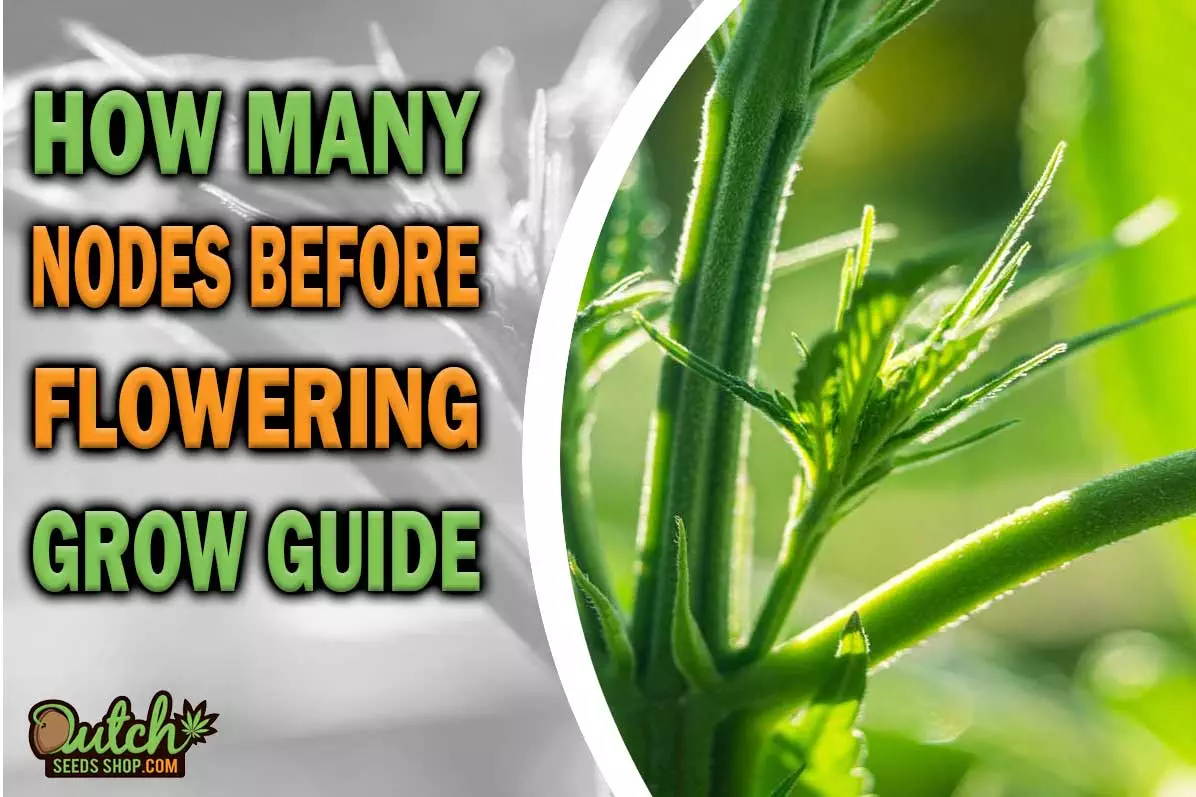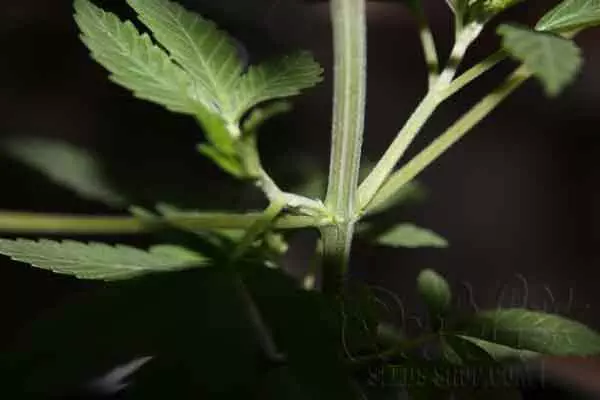How Many Nodes Before Flowering: A Comprehensive Guide
Cannabis cultivation is an art that requires knowledge, skill, and attention to detail. One crucial aspect to consider when growing cannabis plants is the number of nodes developed before the flowering stage. Nodes play a significant role in determining the overall yield and quality of your cannabis plants. This comprehensive guide will delve into the importance…

Understanding Nodes in Cannabis Plants
If you want to ensure successful cannabis growth, it’s essential to understand the role of nodes in the growth and development of your plants.
What are Nodes?
Nodes are the points on a cannabis plant’s stem where leaves, branches, and flowering sites grow.
They are also the location of the apical meristem, which is responsible for the plant’s vertical growth.
Internodes, on the other hand, are the spaces between nodes.

Importance of Nodes in Cannabis Growth
Nodes are critical for the growth and development of cannabis plants because they:
- Support foliage and budding sites, which contribute to overall yield
- Provide a location for pruning and training techniques to optimize plant structure
- Indicate the plant’s sexual maturity, allowing for early identification of male and female plants
Factors Influencing Node Development
Several factors can influence the development of nodes in cannabis plants, including genetics, environmental factors, and the choice of nutrients and growing medium.
Genetics
The genetics of a cannabis strain can significantly impact the number of nodes a plant develops.
Indica strains typically have shorter internodes and more compact growth, while Sativa strains have longer internodes and a more stretched-out structure.
Environmental Factors
Environmental factors such as light, temperature, and humidity can also affect node development in cannabis plants.
Optimal conditions for vegetative growth include:
- Light: 18-24 hours of light per day
- The temperature: 70-85°F (21-29°C)
- Humidity: 40-60% RH
Nutrients and Growing Medium
The choice of nutrients and growing medium can influence node development as well.
Some key considerations include:
- Nitrogen-rich nutrients for vegetative growth
- Well-aerated growing mediums, such as coco coir or soilless mixes
- Proper watering practices to avoid overwatering or underwatering
How to Count Nodes in Cannabis Plants
To optimize your cannabis growth, knowing how to count the nodes in your plants accurately is essential.
Visual Identification
To visually identify nodes on a cannabis plant, look for the following:
- Pairs of leaves emerging from the stem
- Branches growing from the main stem
- Preflowers or pistillate hairs, indicating sexual maturity
Tips for Accurate Node Counting
To accurately count nodes in cannabis plants:
- Start from the base of the plant and work your way up the main stem
- Count pairs of leaves, branches, and preflowers as separate nodes
- Ignore the cotyledons (seed leaves) at the very base of the plant

Ideal Node Count for Various Strains
Different cannabis strains require varying node counts before transitioning to the flowering stage.
Indica Strains
Indica strains typically require 4-6 nodes before flowering.
They are known for their bushy structure and shorter height, making them ideal for SOG (Sea of Green) setups.
Sativa Strains
Sativa strains usually need 6-8 nodes before flowering.
They tend to have a more stretched-out structure and can grow quite tall, making them better suited for screen or canopy setups.
Hybrid Strains
Depending on their Indica or Sativa dominance, hybrid strains may require 4-8 nodes before flowering.
Researching the specific strain you’re growing is essential to determine the ideal node count for optimal results.
Transitioning to the Flowering Stage
Once your cannabis plants reach the ideal node count, it’s time to transition them to the flowering stage.
Adjusting Light Cycles
Initiate the flowering stage by adjusting the light cycle to 12 hours of light and 12 hours of darkness per day.
This change in light exposure triggers the plant’s hormonal response, leading to the development of flowers.
Nutrient Changes
During the transition to the flowering stage, cannabis plants require a different nutrient balance.
Gradually reduce nitrogen levels while increasing phosphorus and potassium levels to promote healthy flower development.

Pruning and Training Techniques
Pruning and training techniques can impact node development and yield during the flowering stage.
Some popular methods include Lollipopping, Topping, and Screen of Green (ScrOG):
- Topping: Removing the main cola to encourage lateral growth and more budding sites
- Lollipopping: Removing the lower third of the plant’s foliage to focus energy on the upper buds
- Screen of Green (ScrOG): Using a horizontal screen to spread out branches and create an even canopy for better light exposure
FAQ
How big should plants be before budding?
Cannabis plants should reach their ideal node count, typically between 4-8 nodes, depending on the strain, before transitioning to the budding stage.
How do you trigger flowering?
Trigger flowering in cannabis plants by adjusting the light cycle to 12 hours of light and 12 hours of darkness per day.
How to get tighter node spacing?
To achieve tighter node spacing in cannabis plants, ensure optimal environmental conditions, including lighting, temperature, and humidity.
When to switch from the vegetative to the flowering stage?
Switch from the vegetative to flowering stage when your cannabis plants have reached the ideal node count for their strain (typically between 4-8 nodes).
About the Author
Share the Love:
